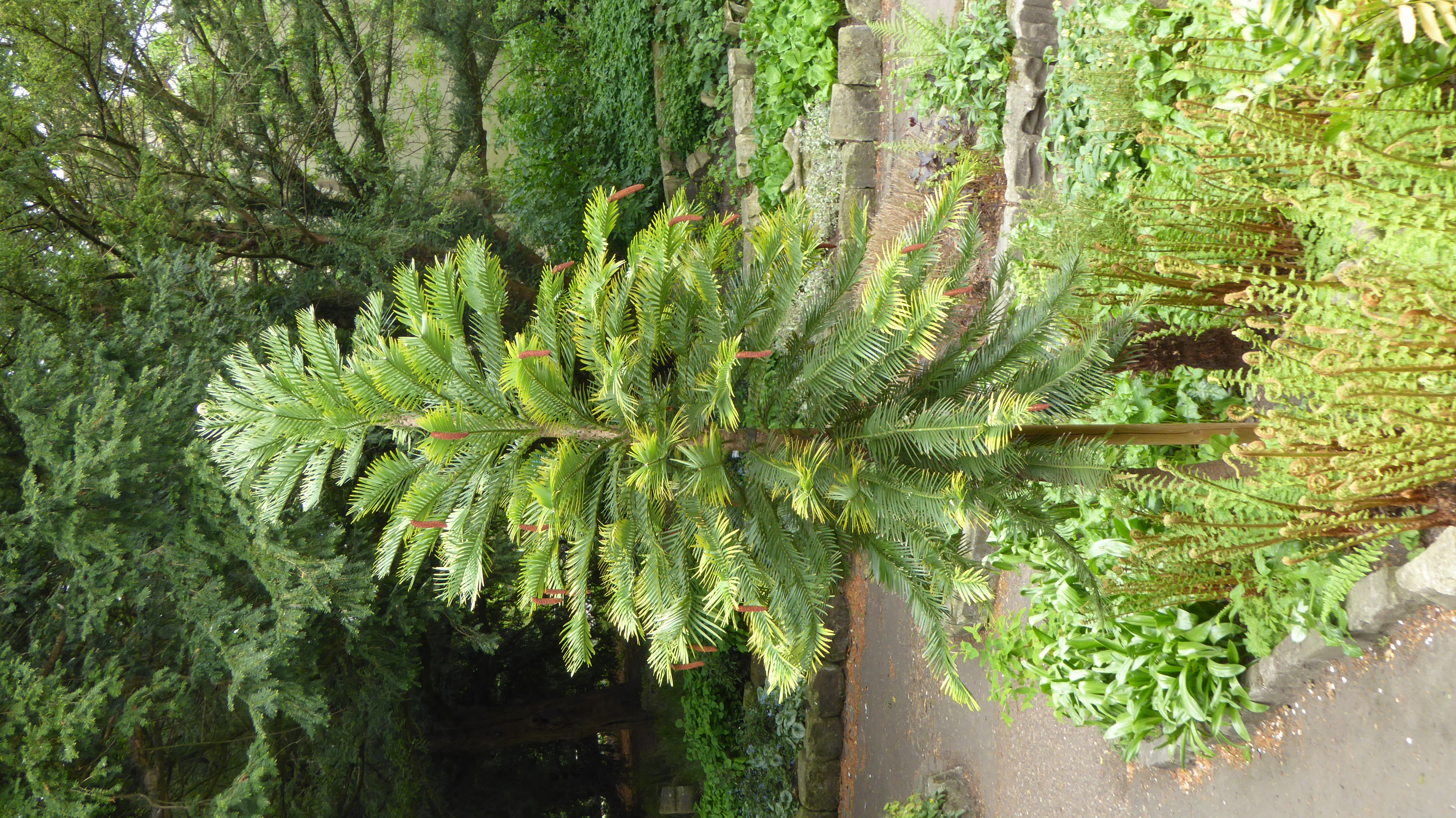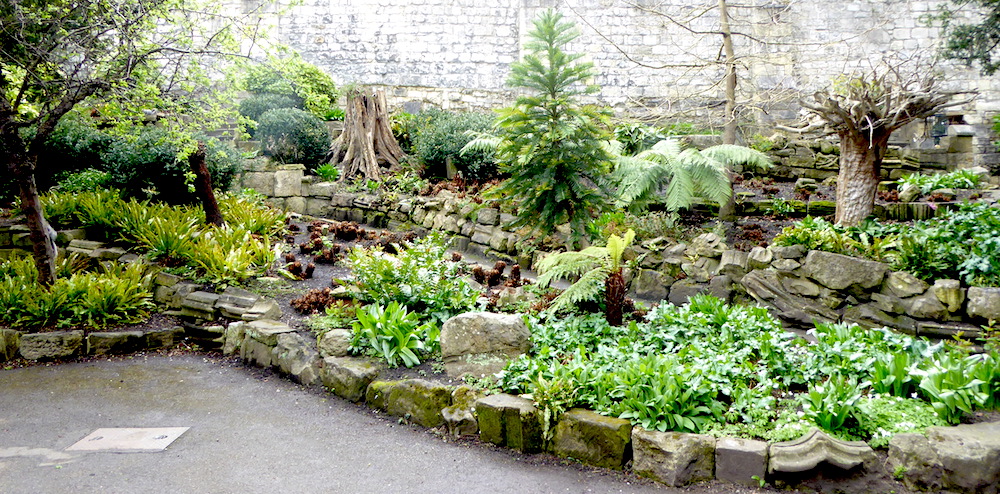Many thanks to Peter Hogarth for his help here. Photographs by the author. You may use these images without prior permission for any scholarly or educational purpose as long as you (1) credit the photographer and (2) link your document to this URL in a web document or cite the Victorian Web in a print one. [Click on images to enlarge them.]
The Yorkshire Museum stands in the northern part of gardens which can be entered either at Museum Lodge, or from Marygate to the west.
West Entrance

Entrance to the Gardens beside St Mary's Lodge, where the Victorian geologist, John Phillips (1800-1874), lived from 1839-1853.
Gates at the west side of the garden are attached to the remains of the medieval gateway. This had for some years been a public house, but was the home from 1839-53 of John Phillips, the nephew of William "Strata" Smith, the first Keeper of the Museum and a famous geologist in his own right. The wrought- and cast-iron gates, and stout gate piers, date to 1879.


Left: Ironwork at the West Entrance. Right: West Entrance, part of St Mary's Abbey Gateway.
Museum Gardens is probably best known for harbouring the ruins of St Mary's Abbey. But over the Victorian period, several specialist collections of trees and plants were grown here: there were hothouses for orchids and a Victoria regia water lily, and at times there were other attractions, including an aquarium, an aviary, and a menagerie with a bear. Last to go in the 1990s, there were freely roaming peacocks (Hogarth and Anderson 2018).



Left to right: (a) Small-leafed Lime in May. (b) Willow-leafed ash. (c) Cut-leafed hornbeam.
In botanical terms, the gardens are best known now for the specimen trees, some of which must go back to Victorian plantings. A few were rare native species, such as the Small-leafed Lime (Tilia cordata) but others were varieties of common species, such as the Willow-leafed Ash (Fraxinus angustifolia lentiscifolia) or the Cut-leafed Hornbeam (Carpinus betulus incisa): keen-eyed gardeners would notice such variations and propagate them.



Left to right: (a) Pear-barked beech. (b) True Service Tree. (c) A Wollemi pine (see last paragraph).
The Latin name of the large beech tree near the Roman multangular tower is Fagus sylvatica miltonensis, because there is strong circumstantial evidence that it was cultivated from the original individual tree spotted by Viscount Milton’s head gardener at Milton Hall near Peterborough in the 1830s: Viscount Milton was a patron and President of the Society until 1857. Above the graft, these trees have rough bark like that of a pear tree rather than a standard beech. Another tree which is likely to be a Victorian planting is the True Service Tree (Sorbus domestica pyrifera) near the Hospitium and on the river side of the new flood banks. This sorbus has pear-shaped fruits instead of the usual round ones. The specimen in the garden is perhaps derived from a unique tree in the Wyre Forest which was destroyed by fire in 1862; a small wild population has since been discovered there, also in South Wales and Cornwall. They are not found on damp ground, and the wild ones grow on hilly slopes, so one might hope a cutting has been taken of the Society’s specimen.

A recent development in line with its establishment as a botanical garden was the improvement of the fern garden near the Baines house: the display includes a rootery and several uncommon plants including a Wollemi pine, which until 1994 was only known from fossils.
Links to Related Material
- Blue Plaque to John Phillips, closer view
- The Yorkshire Museum, by William Wilkins, with more views of the gardens
- The Conservation of St Mary's Abbey's Ruins in the Yorkshire Museum's Grounds
- Museum Lodge entrance
- York Observatory, by J. P. Pritchett
- Manor Cottage, Henry Baines' House
Bibliography
Hogarth, Peter and Ewan Anderson. “The most fortunate situation …” The Story of York’s Museum Gardens. York: The Yorkshire Philosophical Society, 2018.
Created 23 August 2023
last modified 2 September 2023